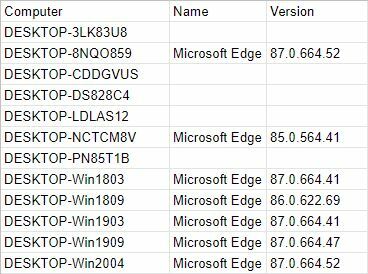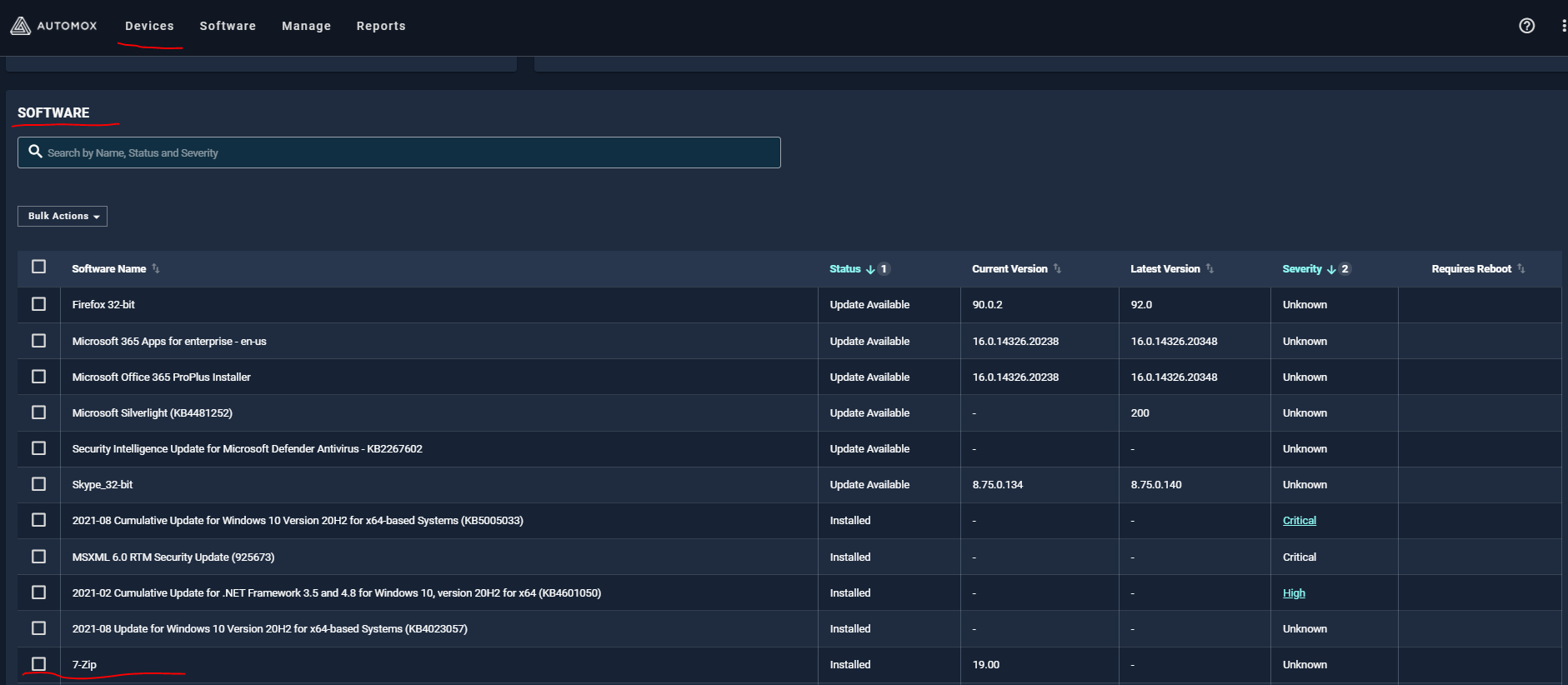This was originally written for a customer that wanted to see if every system in their environment had Sophos Antivirus installed or not - and what version if they did.
$apiKey = 'YOUR_API_KEY' - in your console, go to Settings->API and select the API key. Note that the API key is per admin user, so you and another admin in your console will have different API keys.
$orgID = 'YOUR_ORG_ID' - put in your Org ID which can be found by looking at the URL on the dashboard and selecting the value after the “?o=”: [https://console.automox.com/dashboard?o=1234]. In this example the Org ID is 1234.
$appInstalled = 'APPLICATION' - put the name of the application as it is listed in the software section of a device’s page that has it installed.
$filepath - The save location and file name for the .csv file generated.
Here’s a sample output checking for Microsoft Edge Chromium:

$apiKey = 'YOUR_API_KEY'
$orgID = 'YOUR_ORG_ID'
$appInstalled = 'Microsoft Edge'
$filepath = 'C:\Temp\AppInstalled.csv'
Set-Content $filepath -Value "Computer,Name,Version"
$apiInstance = 'https://console.automox.com/api/'
$apiTable = 'servers'
$orgAndKey = "?o=$orgID&api_key=$apiKey"
# Put components together
$getURI = $apiInstance + $apiTable + $orgAndKey
# Get the json body of the Web Request
$jsonReturn = (Invoke-WebRequest -UseBasicParsing -Method Get -Uri $getURI).Content
# Convert to object with manipulatable properties/values
$servers = $jsonReturn | ConvertFrom-Json
$servers = $servers | Sort-Object name
# Check each server for software
foreach ($server in $servers) {
$serverID = $server.id
$serverName = $server.name
$orgAndKey = "/$serverID/packages?o=$orgID"
# Put components together
$getURI = $apiInstance + $apiTable + $orgAndKey
$headers = @{ "Authorization" = "Bearer $apiKey" }
$response = (Invoke-WebRequest -Method Get -Uri $getURI -Headers $headers).Content | ConvertFrom-Json
$installed = $response | Where-Object {$_.installed -EQ $true -and $_.display_name -EQ $appInstalled}
$output = $serverName + "," + $installed.display_name + "," + $installed.version
$output | Add-Content -Path $filepath
}


